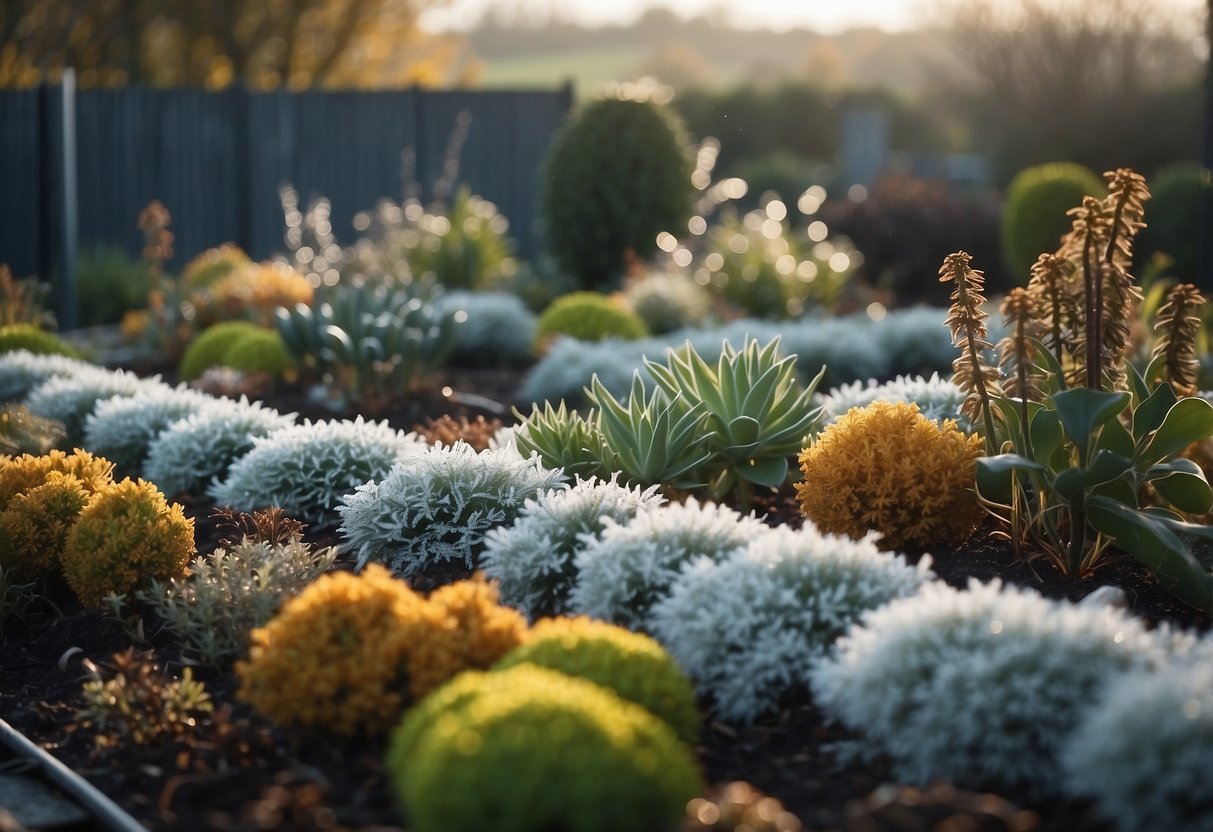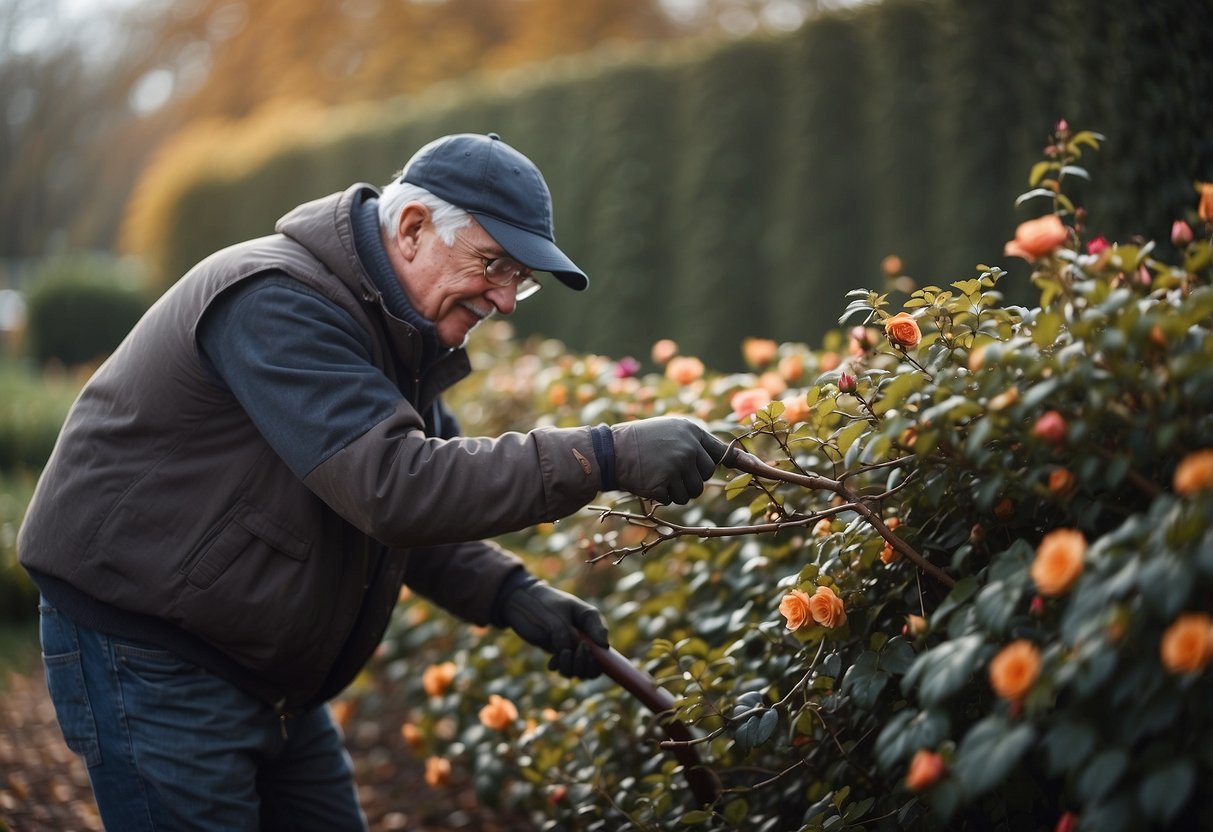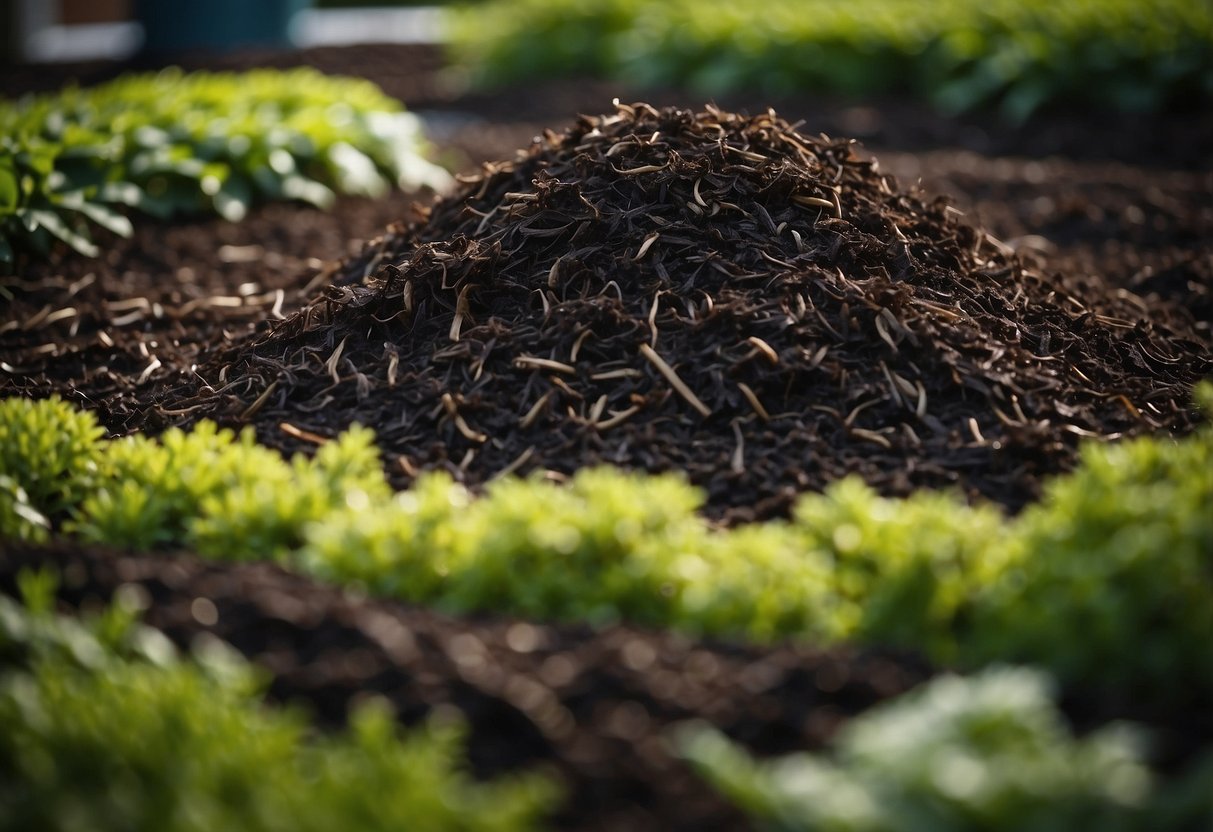Gardening Tips for November UK: Preparing Your Winter Garden
November is a key month for gardeners in the UK as you prepare your garden for the winter ahead while still enjoying the last bits of autumn. Taking the right steps now can help ensure a healthy and vibrant garden come spring. What can you do to make your garden thrive in the cold months?

Whether you have a small backyard or a larger allotment, there are tasks that can keep your garden looking great and ready for next year. You’ll find that planning and a bit of effort now can lead to big rewards when the warmer weather returns.
1) Plant Winter Pansies

Winter pansies are a great choice for adding color to your garden during the colder months. They thrive when planted from late summer to mid-autumn, giving them time to establish before the frost sets in.
Make sure to space them about 25 cm apart to prevent overcrowding. They can survive low temperatures and will bloom beautifully even in winter.
You can start them indoors from June to July to give them a head start. Use a seed tray with compost, and keep the seeds spaced. This helps them develop strong roots before you transplant them outside. Check out more gardening tips for winter pansies at BBC Gardeners World Magazine for extra help!
2) Use Frost Protection Fleece

In November, frosty nights can damage your plants. Using garden fleece is an easy way to protect them.
Wrap or cover vulnerable plants with this light, nonwoven fabric. It helps keep the cold out and warmth in. Heavier fleece of 30g can protect down to -3°C, while lighter 17g fleece is good for just below freezing.
Fleece can be used for larger and more tender plants. For added protection, you can also wrap pots with bubble wrap before covering them with fleece.
3) Clean Greenhouse Glass

Cleaning your greenhouse glass is important to keep your plants healthy.
Start by removing all plants and materials from inside the greenhouse.
Next, use a soft sponge or cloth dipped in warm, soapy water.
Wipe down the glass panes, working from top to bottom to avoid streaks.
Rinse with clean water and dry with a squeegee to prevent drips and streaks.
This helps let in more light and reduces pests and diseases, making your plants happier.
4) Prune Climbing Roses

November is the perfect time to prune your climbing roses. Start by removing any weak or dead shoots. This keeps your plants healthy.
Next, tie in the new shoots that are in the right place. This fills in gaps and enhances the display of flowers on your walls or fences.
Make sure to cut just above a bud that is pointing in the direction you want new growth. This encourages healthy new stems.
For more details, visit Rose pruning: climbing roses.
5) Insulate Outdoor Pots

Winter frost can damage your plants if you don’t protect them properly. To keep your pots safe, wrap them in hessian or bubble wrap.
Secure the wrap with garden twine. This simple step helps keep the roots warm.
For added protection, lift your pots off the ground with bricks or pot feet. This prevents waterlogging and further damage.
6) Harvest Parsnips

In November, you can start harvesting your parsnips. For the best flavor, wait until after the first frost.
Use a garden fork to gently loosen the soil around the roots. Be careful not to damage them.
Remove most of the foliage, leaving about an inch at the top. Parsnips can stay in the ground until you need them.
Enjoy the sweet, earthy flavor of freshly harvested parsnips during the winter months. You can read more about it here.
7) Start Planning Seed Orders

November is a great time to think ahead about your garden. Start by ordering seed catalogues for next year’s plants and flowers.
Many gardeners like to plan their summer-flowering bulbs and perennials now. Research the best vegetable seeds to sow and variety of flowers you want to grow next year.
Ordering early ensures you get the varieties you want before they sell out. Enjoy the exciting task of planning your garden’s future!
8) Check Stored Bulbs

In November, it’s important to check your stored summer bulbs.
Look for any signs of rot or mold. If you find any, remove those bulbs to prevent the spread.
Make sure your bulbs are in a cool, dry place. A frost-proof area works best. Inspect regularly to keep them healthy for the next planting season.
9) Add Mulch to Beds

Mulching is a simple way to keep your garden beds healthy. It helps suppress weeds and keeps soil moist. By adding a thick layer of mulch, you protect your plants from harsh weather.
Different materials can be used as mulch. Common choices include wood chips, straw, and compost. Each type helps in different ways, offering nutrients and improving soil structure. To learn more, check out this guide on mulching.
Apply mulch when the soil is moist after weeding. Aim for a thickness of 2-3 inches. This helps lock in moisture and prevents weeds from sprouting. For detailed steps, refer to this mulch bed guide.
10) Lift and Divide Perennials

November is a great time to lift and divide your overgrown perennials. This can help keep your garden looking neat and encourage healthy growth.
Start by carefully lifting the plant with a garden fork, working outward from the center to protect the roots. Shake off excess soil to see the roots clearly.
Next, use your hands or a knife to separate the clump into smaller sections. Make sure each section has a good amount of roots and shoots.
Replant the divided sections at the same depth as they were before. Water them well to help them settle in their new spots. Learn more about this process from RHS Gardening.
Preparing Your Garden

In November, focus on clearing debris, preparing your soil, and protecting your plants from frost. These steps are crucial to keep your garden healthy through winter.
Clearing Debris
November is the perfect time to clear away fallen leaves and old plant material. Rake up leaves and store them in bags or compost bins. This helps prevent pests and diseases from taking hold.
Cut back dead or dying plants. This encourages new growth and keeps your garden looking tidy. Pay special attention to perennials and shrubs.
Remove weeds and any remaining annual plants. They can rot and attract pests. Cleaning up now makes for less work in spring.
Soil Preparation
Give your soil some love to get it ready for the winter and next year’s planting. Start by removing any weeds. They can take nutrients and light, which are vital for garden soil health.
Add compost or well-rotted manure to enrich the soil. This aids in nutrient retention and improves soil structure. Spread a layer about 2-3 inches thick over your garden beds.
Consider turning the soil. This exposes pests to cold weather, helping control their numbers. Plus, it helps the compost mix in better, enriching the soil for future plants.
Plant Protection
Protecting your plants from frost is key in November. Start by mulching around the base of plants. Use organic materials like straw or wood chips. This keeps the soil warmer for longer.
Move potted plants to more sheltered locations. A greenhouse or a spot close to the house works well. They get extra warmth and protection from strong winds.
For more sensitive plants, put up fleece or cloches. These create a warmer micro-environment. Ensure they’re secured well to withstand winter winds.
Planting and Sowing

In November, your garden can still thrive with the right choices. You can plant fruit trees, sow seeds, and start bulbs to prepare for the coming seasons.
Choosing the Right Plants
This month, focus on planting new fruit trees and bushes. Ideal choices include apples, pears, and blackberries. Ensure the ground isn’t frosted or too wet. Autumn is a good time to plant rhubarb, strawberries, and apricots. For more details, visit tips on planting fruit trees and bushes.
To freshen up your garden, you can also add flowers like pansies and violas. These will withstand the cold and add color through winter.
Sowing Seeds
Sow winter-hardy varieties such as broad beans and peas this November. Varieties like ‘Aquadulce Claudia’ for broad beans and ‘Meteor’ for peas do well.
Use cloches to protect seeds from frost, or start them in pots in an unheated greenhouse. For mild areas, sow overwintering broad beans directly in well-drained soil.
For more guidance, see advice on sowing vegetables in November.
Bulb Planting
Planting bulbs is essential in November to ensure a beautiful spring display. Suitable bulbs include daffodils, tulips, and hyacinths. Make sure to plant them in well-drained soil, ideally during a dry spell.
Use a bulb planter to achieve the correct depth—typically three times the bulb’s height. Space bulbs evenly to avoid overcrowding and ensure better blooms. For summer-flowering bulbs, you can order them now and plant in spring. Check out more on planting bulbs for spring.
By taking these steps, your garden will not only survive the winter but also be well-prepared for spring growth.







